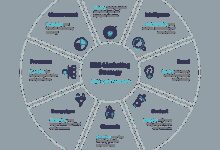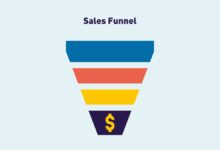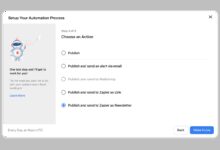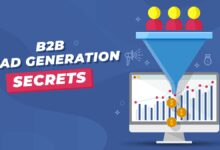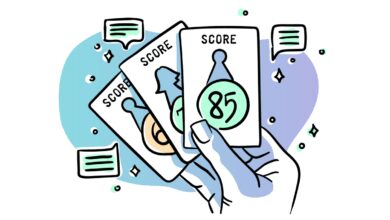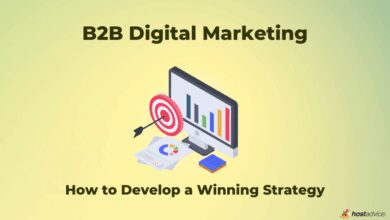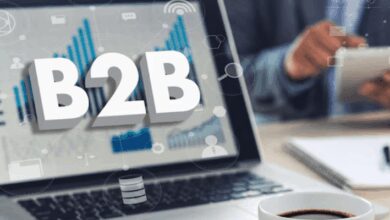B2B Marketing Automation: 7 Powerful Strategies to Skyrocket Growth
In today’s fast-paced digital landscape, b2b marketing automation isn’t just a luxury—it’s a necessity. Companies leveraging automation see faster lead conversion, smarter targeting, and scalable growth. Let’s dive into how you can harness its full power.
What Is B2B Marketing Automation and Why It Matters

B2B marketing automation refers to the use of software and technology to streamline, automate, and measure marketing tasks and workflows in business-to-business environments. Unlike B2C, where decisions are often emotional and immediate, B2B buying cycles are longer, involve multiple stakeholders, and require consistent nurturing. Automation bridges the gap between initial interest and final sale by delivering the right message at the right time.
Defining the Core Concept
At its core, b2b marketing automation is about efficiency. It replaces manual, repetitive tasks—like sending follow-up emails, scoring leads, or updating CRM records—with intelligent systems that act based on predefined rules and real-time data. This allows marketing teams to focus on strategy, creativity, and relationship-building rather than administrative overhead.
According to Gartner, marketing automation platforms help organizations increase revenue by up to 14.5% while reducing marketing overhead by as much as 12.2%. These tools are especially powerful in B2B contexts where lead nurturing can take months.
How It Differs from B2C Automation
While both B2B and B2C marketing automation use similar technologies, their application differs significantly. B2B automation focuses on account-based marketing (ABM), lead scoring, and multi-touchpoint engagement across complex decision-making units. In contrast, B2C automation often emphasizes speed, volume, and emotional triggers.
- Buyer Journey Complexity: B2B sales cycles involve multiple stakeholders and longer evaluation periods.
- Content Personalization: B2B requires highly tailored content for different roles (e.g., CFO vs. CTO).
- Lead Qualification: B2B relies heavily on lead scoring models based on firmographics and engagement behavior.
“Marketing automation is not about replacing humans—it’s about empowering them to work smarter.” — Ann Handley, Chief Content Officer at MarketingProfs
Key Benefits of B2B Marketing Automation
Implementing b2b marketing automation offers transformative advantages for organizations aiming to scale efficiently. From improving lead quality to enhancing customer retention, the benefits are both measurable and strategic.
Improved Lead Generation and Nurturing
One of the most significant advantages of b2b marketing automation is its ability to generate high-quality leads consistently. By using landing pages, gated content, and smart forms, businesses can capture prospect information and begin nurturing them immediately.
Automated email drip campaigns guide prospects through the funnel with relevant content—whitepapers for awareness, case studies for consideration, and product demos for decision-making. Research from HubSpot shows that nurtured leads make 47% larger purchases than non-nurtured leads.
Higher Conversion Rates and Sales Alignment
Automation enables tighter alignment between marketing and sales teams through shared data and workflows. Lead scoring models—based on demographic fit and behavioral engagement—ensure that only the most qualified prospects are passed to sales.
For example, a lead that downloads a pricing guide and visits the product page three times might be scored as “sales-ready.” This reduces wasted effort and increases conversion rates. A study by MarketingProfs found that companies with strong sales-marketing alignment achieve 36% higher customer retention and 38% higher sales win rates.
Scalability and Operational Efficiency
As businesses grow, manually managing thousands of leads becomes unsustainable. B2B marketing automation allows companies to scale their outreach without proportionally increasing headcount.
- Automated segmentation ensures personalized messaging at scale.
- Dynamic content adapts emails and web experiences based on user behavior.
- Workflow automation reduces time spent on repetitive tasks by up to 60%, according to Nucleus Research.
Essential Components of a B2B Marketing Automation Strategy
A successful b2b marketing automation strategy isn’t built overnight. It requires a clear framework, integrated tools, and a deep understanding of your audience. Let’s explore the foundational components that make automation effective.
Lead Scoring and Segmentation
Not all leads are created equal. Lead scoring assigns numerical values to prospects based on their profile (firmographics, job title) and behavior (email opens, website visits, content downloads). High-scoring leads are prioritized for sales outreach.
Segmentation takes this further by grouping leads into categories—such as industry, company size, or stage in the buyer’s journey—so that messaging can be hyper-relevant. For instance, a SaaS company might send different content to IT managers versus finance directors, even within the same organization.
Email Campaign Automation
Email remains one of the highest ROI channels in B2B marketing. Automation allows marketers to set up triggered email sequences based on user actions.
- Welcome Series: Sent after a new lead subscribes or downloads content.
- Re-engagement Campaigns: Target inactive subscribers with special offers or surveys.
- Event Follow-Ups: Automatically send presentation decks after a webinar ends.
Platforms like Mailchimp and ActiveCampaign offer robust automation features tailored for B2B use cases.
CRM Integration and Data Syncing
The true power of b2b marketing automation is unlocked when it’s integrated with a Customer Relationship Management (CRM) system like Salesforce or HubSpot CRM. This ensures that every interaction—email clicks, form submissions, page views—is recorded and accessible to both marketing and sales teams.
Real-time syncing prevents data silos and enables personalized follow-ups. For example, if a lead attends a demo, the CRM updates instantly, triggering a post-demo email and alerting the sales rep to make a call within 24 hours.
Top B2B Marketing Automation Tools and Platforms
Choosing the right tool is critical to the success of your b2b marketing automation efforts. The market is crowded, but several platforms stand out for their functionality, ease of use, and integration capabilities.
HubSpot: All-in-One Marketing Hub
HubSpot is one of the most popular b2b marketing automation platforms, offering a comprehensive suite of tools for email marketing, lead nurturing, CRM, and analytics. Its user-friendly interface makes it ideal for mid-sized businesses and startups.
Key features include:
- Drag-and-drop email builder
- Smart workflows based on behavior
- Seamless integration with Salesforce and ZoomInfo
- Advanced reporting dashboards
Learn more at HubSpot Marketing Hub.
Marketo: Enterprise-Grade Power
Marketo, now part of Adobe Experience Cloud, is a leader in enterprise-level b2b marketing automation. It’s designed for large organizations with complex sales cycles and global operations.
Marketo excels in:
- Account-Based Marketing (ABM) campaigns
- Multi-channel orchestration (email, web, ads)
- Advanced lead scoring and AI-driven recommendations
- Compliance with GDPR and CCPA regulations
Explore Marketo’s capabilities at Marketo.com.
Pardot: Salesforce’s B2B Automation Engine
Pardot is Salesforce’s native marketing automation solution, making it a top choice for companies already using the Salesforce CRM. It offers deep integration, real-time lead syncing, and powerful ROI reporting.
Best suited for:
- Salesforce-centric organizations
- Highly regulated industries (finance, healthcare)
- Teams needing granular control over lead assignment rules
Visit Pardot.com for more details.
How to Build a Winning B2B Marketing Automation Funnel
A well-structured marketing funnel is essential for guiding prospects from awareness to purchase. B2B marketing automation enhances each stage of the funnel by delivering timely, relevant content and actions.
Awareness Stage: Attracting the Right Audience
The top of the funnel (TOFU) is about visibility and education. Use automation to attract visitors through SEO-optimized blog posts, social media ads, and downloadable resources like ebooks or checklists.
Automated tools can help:
- Retarget website visitors with personalized ads
- Trigger pop-ups offering content in exchange for email signups
- Schedule social media posts across platforms using tools like Hootsuite or Buffer
For example, a cybersecurity firm might create an automated campaign offering a free “Security Risk Assessment Template” to IT managers who visit their blog.
Consideration Stage: Nurturing Leads with Value
In the middle of the funnel (MOFU), prospects are evaluating solutions. This is where b2b marketing automation shines through targeted email sequences, webinars, and case studies.
Automated nurturing workflows can:
- Send a series of educational emails over 2–3 weeks
- Invite leads to live or on-demand webinars
- Deliver competitor comparison guides
A study by Content Marketing Institute found that 77% of B2B marketers use email newsletters as their primary nurturing tool—most of which are automated.
Decision Stage: Accelerating Conversion
At the bottom of the funnel (BOFU), prospects are ready to buy. Automation helps push them over the edge with personalized offers, demo scheduling, and sales handoff protocols.
Effective tactics include:
- Automated demo request forms that notify sales reps instantly
- Personalized pricing proposals based on company size
- Follow-up emails with testimonials and ROI calculators
Tools like Calendly can integrate with automation platforms to let leads book meetings directly, reducing friction and shortening sales cycles.
Integrating Account-Based Marketing (ABM) with Automation
Account-Based Marketing (ABM) is a strategic approach where marketing and sales teams collaborate to target high-value accounts as markets of one. When combined with b2b marketing automation, ABM becomes scalable and data-driven.
Identifying High-Value Accounts
The first step in ABM is identifying which companies to target. Use firmographic data (industry, revenue, employee count), technographic insights (technologies they use), and intent data (content they’re researching) to build your target account list.
Automation platforms like 6sense and Demandbase provide AI-powered tools to identify accounts showing buying intent.
Personalized Campaign Orchestration
Once target accounts are identified, automation enables hyper-personalized campaigns across multiple channels:
- Custom landing pages for specific accounts
- LinkedIn ad retargeting for key decision-makers
- Email sequences tailored to each stakeholder’s role
For example, a cloud infrastructure provider might run a campaign targeting a Fortune 500 company, sending the CIO technical whitepapers, the CFO cost-saving analyses, and the operations team case studies—all automated and tracked.
Measuring ABM Success with Automation
One of the biggest challenges in ABM is proving ROI. Automation platforms provide detailed analytics on account engagement, such as:
- Website visits from target accounts
- Email open rates by domain
- Content downloads per account
- Meeting bookings and pipeline velocity
These metrics help refine campaigns and demonstrate marketing’s impact on revenue.
Measuring Success: KPIs and Analytics in B2B Marketing Automation
Without measurement, automation is just activity. To ensure your b2b marketing automation delivers results, you must track the right Key Performance Indicators (KPIs) and use data to optimize continuously.
Essential KPIs to Track
Different stages of the funnel require different metrics. Here are the most critical KPIs:
- Lead Conversion Rate: Percentage of leads that become customers.
- Email Open and Click-Through Rates: Indicate content relevance and engagement.
- Cost Per Lead (CPL): Measures efficiency of acquisition campaigns.
- Customer Acquisition Cost (CAC): Total marketing and sales cost to acquire a customer.
- Return on Marketing Investment (ROMI): Revenue generated per dollar spent on marketing.
Tools like Google Analytics, HubSpot Analytics, and Tableau can visualize these metrics in real time.
Using A/B Testing to Optimize Campaigns
Automation platforms allow marketers to run A/B tests on subject lines, email content, CTAs, and landing pages. Even small improvements—like changing a button color or headline—can significantly boost conversion rates.
For example, a SaaS company tested two versions of a welcome email: one with a generic “Get Started” CTA and another with “See How [Company] Saved 40% in Costs.” The personalized version increased click-through rates by 63%.
Attribution Modeling for Accurate Insights
Multi-touch attribution models help understand which marketing touchpoints contribute most to conversions. Automation systems can track every interaction a lead has with your brand, from the first blog visit to the final demo.
Common models include:
- First-Touch: Credits the first interaction.
- Last-Touch: Credits the final touchpoint.
- Linear: Distributes credit equally across all touches.
- Time-Decay: Gives more credit to touches closer to conversion.
Advanced platforms like Marketo Engage offer AI-driven attribution for more accurate insights.
Common Challenges and How to Overcome Them
While b2b marketing automation offers immense benefits, implementation isn’t without hurdles. Understanding common challenges and how to address them is key to long-term success.
Data Quality and Management Issues
Poor data quality—duplicate records, outdated emails, incomplete profiles—can derail automation efforts. Clean, accurate data is the foundation of effective targeting.
Solutions include:
- Regular data audits and cleansing
- Using data enrichment tools like Clearbit or ZoomInfo
- Implementing double opt-in forms to ensure email validity
Lack of Sales and Marketing Alignment
One of the biggest roadblocks is misalignment between sales and marketing teams. Marketers may generate leads that sales deems unqualified, leading to friction.
To fix this:
- Establish a Service Level Agreement (SLA) between teams
- Co-create lead scoring models
- Hold regular alignment meetings to review performance
“The most successful B2B companies don’t just use automation—they align their people around it.” — SiriusDecisions
Over-Automation and Loss of Personalization
While automation saves time, over-reliance can make communications feel robotic. A generic “Dear Customer” email won’t resonate with a C-suite executive.
Maintain a human touch by:
- Using dynamic content that personalizes based on job title or industry
- Allowing sales reps to send personalized follow-ups after automated sequences
- Monitoring feedback and adjusting tone and messaging
What is b2b marketing automation?
B2B marketing automation is the use of software to automate repetitive marketing tasks such as email campaigns, lead scoring, social media posting, and CRM updates in business-to-business contexts. It helps companies nurture leads, improve sales alignment, and scale their marketing efforts efficiently.
What are the best tools for b2b marketing automation?
Top tools include HubSpot, Marketo, Pardot, ActiveCampaign, and Mailchimp. The best choice depends on your business size, budget, and integration needs. Enterprise companies often prefer Marketo or Pardot, while mid-market firms may opt for HubSpot.
How does b2b marketing automation improve lead conversion?
It improves conversion by delivering timely, personalized content to leads based on their behavior and profile. Automated lead scoring ensures only qualified prospects are passed to sales, reducing wasted effort and increasing close rates.
Can small businesses benefit from b2b marketing automation?
Absolutely. Even small B2B companies can leverage automation to compete with larger players. Tools like Mailchimp and HubSpot offer affordable plans with powerful automation features suitable for startups and SMBs.
How do I measure the ROI of b2b marketing automation?
Measure ROI by tracking KPIs like lead conversion rate, customer acquisition cost (CAC), email engagement, and revenue attributed to marketing campaigns. Use attribution modeling to understand which touchpoints drive results.
B2B marketing automation is no longer optional—it’s a strategic imperative for modern businesses. From streamlining lead nurturing to enabling account-based marketing and improving sales alignment, automation empowers organizations to grow faster and smarter. By choosing the right tools, building effective funnels, and measuring performance rigorously, companies can unlock significant competitive advantages. The key is to start small, focus on data quality, and continuously optimize based on insights. With the right approach, b2b marketing automation becomes a powerful engine for sustainable growth.
Further Reading:
